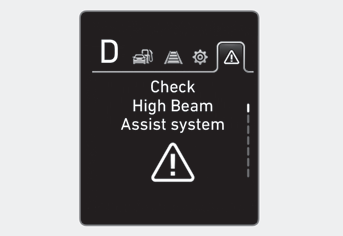Hyundai Venue: Vehicle load limit / Steps for determining correct load limit
1. Locate the statement "The combined weight of occupants and cargo should never exceed XXX kg or XXX lbs." on your vehicle's placard.
2. Determine the combined weight of the driver and passengers that will be riding in your vehicle.
3. Subtract the combined weight of the driver and passengers from XXX kg or XXX lbs.
4. The resulting figure equals the available amount of cargo and luggage load capacity. For example, if the "XXX" amount equals 1400 lbs. and there will be five 150 lb. passengers in your vehicle, the amount of available cargo and luggage load capacity is 650 lbs. (1400 - 750 (5 x 150) = 650 lbs.)
5. Determine the combined weight of luggage and cargo being loaded on the vehicle. That weight may not safely exceed the available cargo and luggage load capacity calculated in Step 4.
6. If your vehicle will be towing a trailer, load from your trailer will be transferred to your vehicle. Consult this manual to determine how this reduces the available cargo and luggage load capacity of your vehicle.
WARNING
Do not overload the vehicle as there is a limit to the total weight, or load limit, including occupants and cargo, the vehicle can carry. Overloading can shorten the life of the vehicle. If the GVWR or the GAWR is exceeded, parts on the vehicle can break, and it can change the handling of your vehicle. These could cause you to lose control and result in an accident.

 Vehicle load limit
Vehicle load limit
Two labels on your driver's door sill show how much weight your vehicle was designed
to carry: the Tire and Loading Information Label and the Certification Label...
 Certification label
Certification label
The certification label is located on the driver’s door sill at the center pillar
and shows the maximum allowable weight of the fully loaded vehicle...
Other information:
Hyundai Venue (QX) (2020-2025) Service Manual: Rear Seat Assembly. Repair procedures
Replacement [Rear seat cushion assembly] 1. Remove the luggage covering bord (A). 2. Loosen the mounting bolts and remove the rear seat cushion assembly (A). Tightening torque : 21...
Hyundai Venue (QX) (2020-2025) Service Manual: Front Bumper Beam Assembly. Components and components location
..
Categories
- Manuals Home
- 1st Generation Venue Owners Manual
- 1st Generation Venue Service Manual
- Immobilizer System
- Electronic Stability Control (ESC)
- System Setting and Activation
- New on site
- Most important about car
Master warning mode

This warning light informs the driver the following situations.
-- Forward Collision-Avoidance Assist system malfunction (if equipped)
-- Forward Collision-Avoidance Assist radar blocked (if equipped)
-- Blind-Spot Collision Warning system malfunction (if equipped)
-- Blind-Spot Collision Warning radar blocked (if equipped)
-- Lamp malfunction (if equipped)
-- High Beam Assist malfunction (if equipped)
-- Tire Pressure Monitoring System (TPMS) malfunction (if equipped)
